One evening during Diwali last autumn, Karina Choudhrie hosted a dinner in London to celebrate the festival of lights and her inaugural high jewellery collection.
Titled Under the Sea, her vibrant creations included jewels with enormous rose-cut rubellites, polished green turquoise, lavender jasper, black diamonds, carved amethyst and emerald bead necklaces. Rare multicoloured chrysocolla earrings were a signature piece, as well as a sparkling diamond secret ring concealing black diamond caviar and a white opal Medusa pendant, its iridescent colours picked out by the trailing gem-set tentacles.
Best known for breaking new ground is the much-collected Mumbai jewellery designer Viren Bhagat, who has brought greater international visibility to contemporary Indian jewellery design.
There is Krishna Choudhary, founder of Santi, and a 10th-generation descendant of a distinguished jewellery family from Jaipur, who is renowned for his combinations of historically significant stones with minimalist settings worked in chevron and wavy patterns.
Neha Dani, who is a poetic sculptor of jewels using old-world techniques and modern technology, and Studio Renn, founded by husband-and-wife team Rahul and Roshni Jhaveri in 2018, which explores modern materials such as concrete juxtaposed with grey gold and diamonds. They are all driven to create jewellery with a resolutely modern sensibility.
India has long been considered a jewellery powerhouse, but today, there is a diaspora of Indian creators fuelling change. They are internationally focused, based between Jaipur and London (Santi), Jaipur and New York (Shalini and Sanjay Kasliwal from the famous Gem Palace dynasty), or Dubai and London (Karina Choudhrie and Radhika Nayar of Devi Jewels), and share a strikingly global outlook. They have learnt their skills from India’s master craftsmen, but are also keen to work with some of Europe’s finest ateliers.
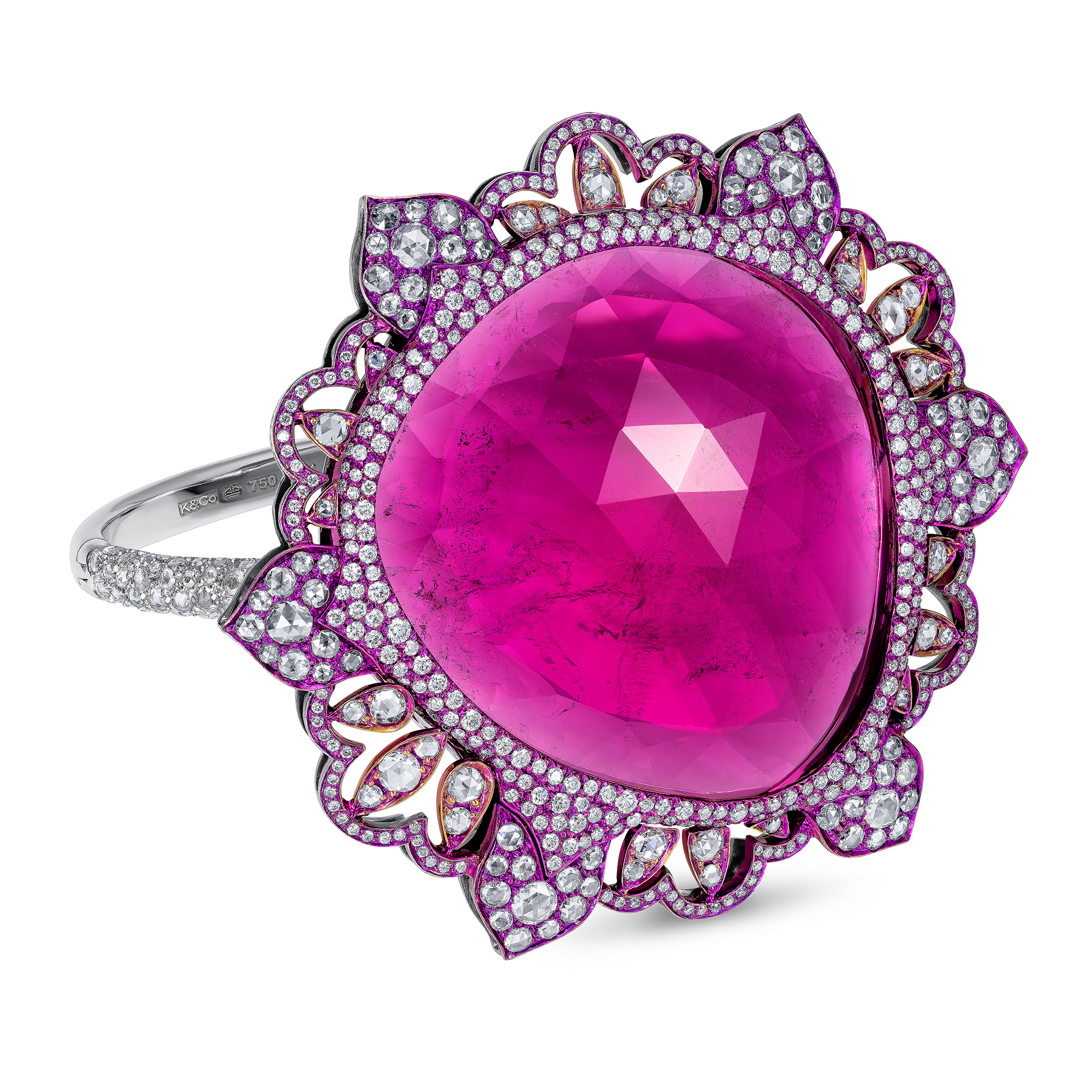
Karina Choudhrie Sea Lotus cuff with rose-cut rubellite and gold and titanium. Photo: Karina Choudhrie
“I’ve never thought of my jewellery as Indian, but as having a strong energy to it, the energy of the stones and structure, with contemporary design,” Choudhrie explains, although she concedes that the rich traditions of India have fuelled her imagination.
Jewellery had always been part of Choudhrie’s family life, receiving gifts of jewellery from her father each Diwali and birthday.
Born and raised in Dubai, she studied gemology in the US before launching her bespoke jewellery business in the UAE. She showcased her debut pieces in Abu Dhabi in 2008 and one of her first sales was to a member of the UAE royal family.
From here, she built her bespoke business with clients from around the GCC.
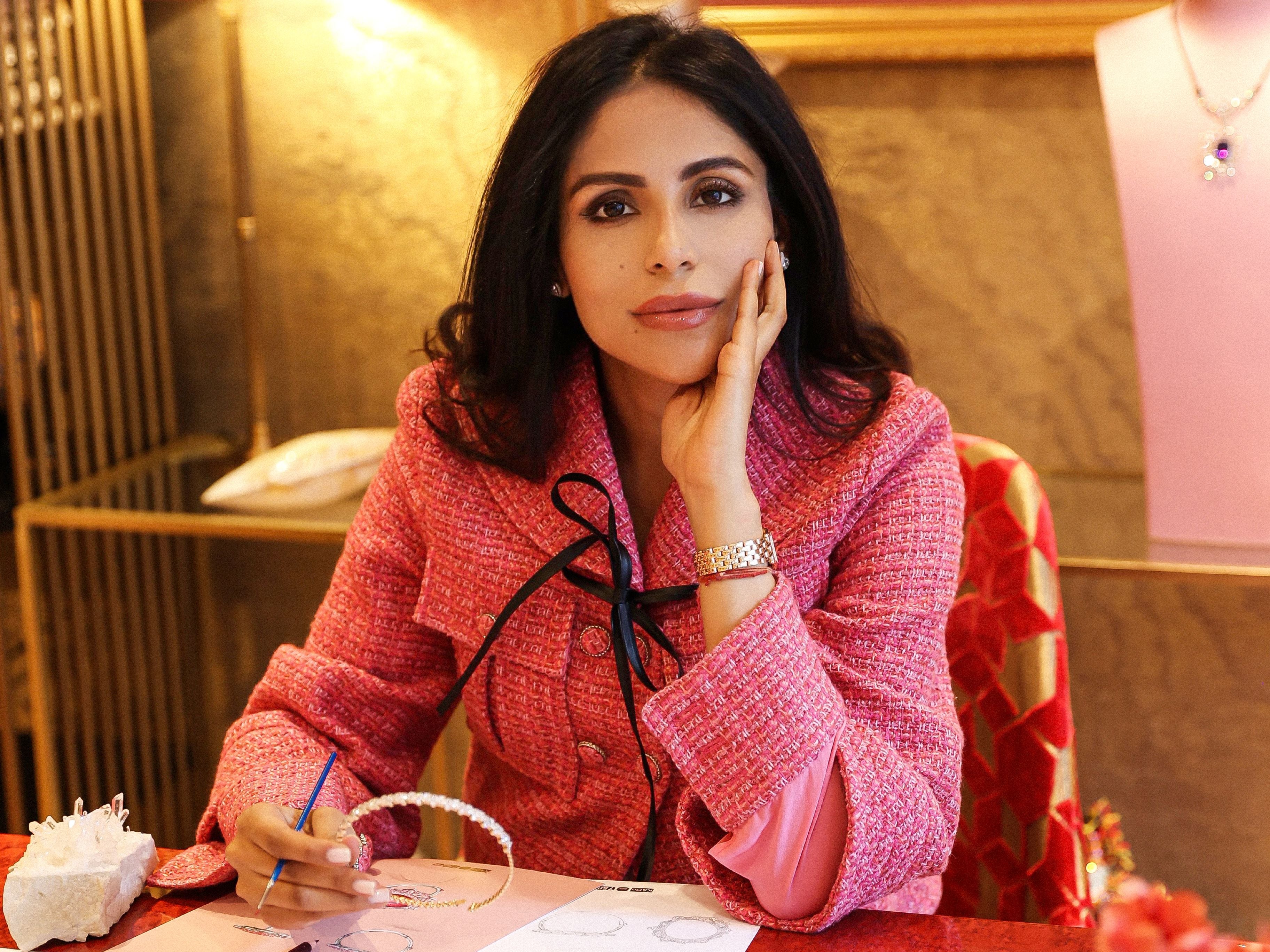
Karina Choudhrie was born in Dubai before she moved to the US to study gemology. Photo: Karina Choudhrie
“They are very knowledgeable: as collectors, they are very educated about what they want and would become extremely involved,” she recalls. “The process of creating bespoke pieces gets very intense, explaining the technical details and almost teaching them the craft.”
Choudhrie’s business model was based on creating bespoke pieces for clients. However, there came a point when she wanted the freedom to create for herself, to explore her own passion for colour and mixing unusual and sizeable stones. She attributes her high jewellery debut to her move in 2010 with her husband to London, where she opened her atelier. “London has this international outlook that gave me the strength and helped me make this happen,” she explains.
She has been thrilled with the feedback since the launch as she continues to hop between London and Dubai, and identifies colourful “big bracelets, long earrings and cocktail rings” among her most popular designs.
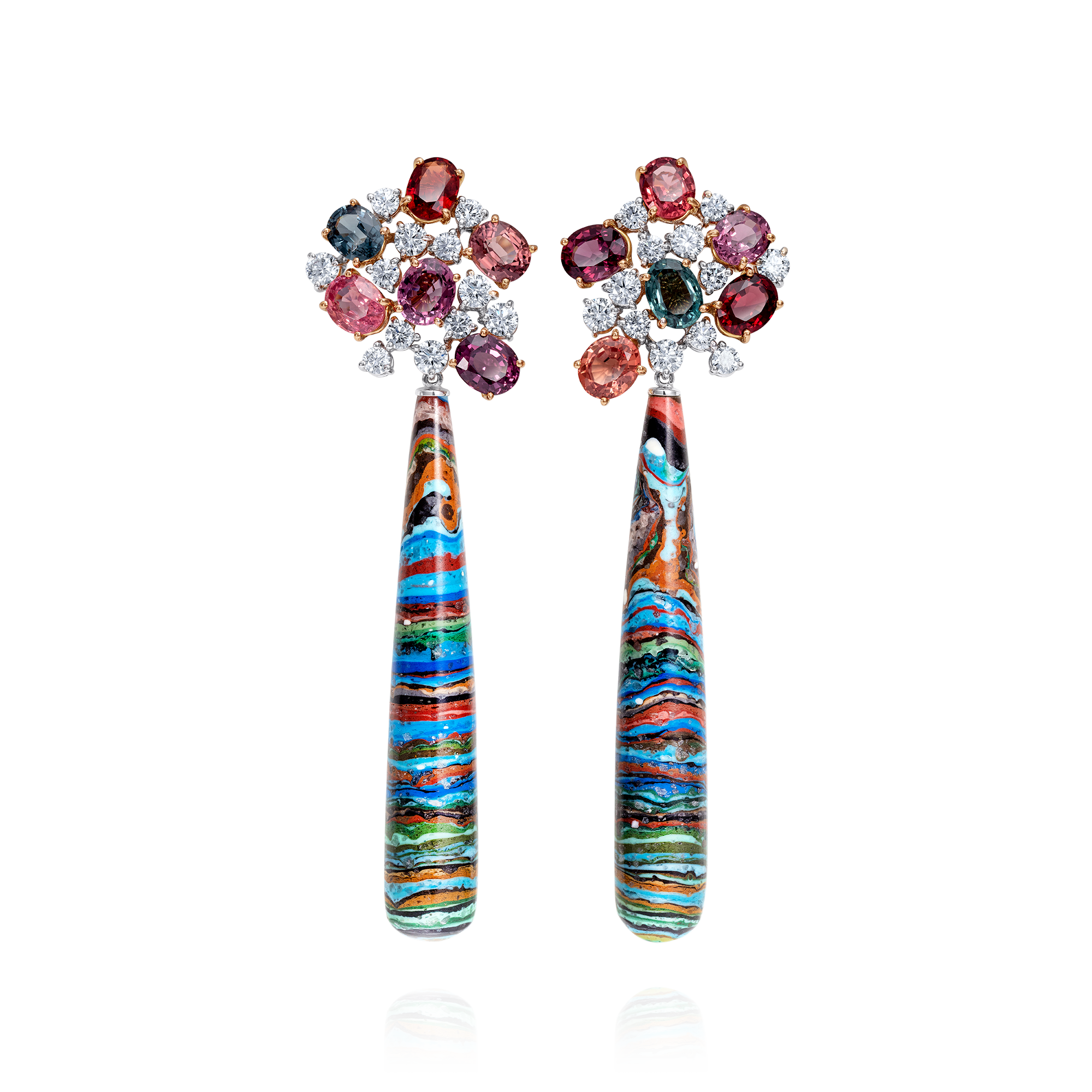
Deep Sea Prism earrings with spinels and chrysocolla. Photo: Karina Choudhrie
Similarly, Radhika Nayar runs her jewellery business between London and Dubai, where she has been a resident for 12 years, showcasing her work twice a year around the UAE.
She was born and raised in India, but claims to have always had a western mindset in terms of jewellery aesthetics, from childhood shopping with her grandmother in Mumbai where, she says, the British influence was still strong.
That international perspective inspired her. She launched an accessory brand in Delhi in 2007 called Ice, featuring; she says: “Indian jewellery, but with a very western concept, so they could be worn with jeans and western fashions.”

Devi Jewels Palm Tree earrings with tanzanite and diamonds. Photo: Devi Jewels
She gained experience working with craftsmen in Jaipur and Hyderabad, but now also works with craftsmen in Italy who specialise in techniques such as expandable bracelets. Nayar closed the business in Delhi when she moved to London to be near her children at school.
Then, in 2019, she decided she would like to restart, and so she launched Devi Jewels.
“As I was living outside India, I felt I had to be more sensitive to the design aesthetics of the West; Devi is all about design and being finely handcrafted jewellery,” she says.
She has always run a strong bespoke design consultancy business in Dubai, sourcing special stones for pieces or redesigning legacy jewellery. There is no shortage of demand: “In a place like the Middle East, there is a very busy social calendar, and so there is a strong culture of jewellery wearing,” she points out.
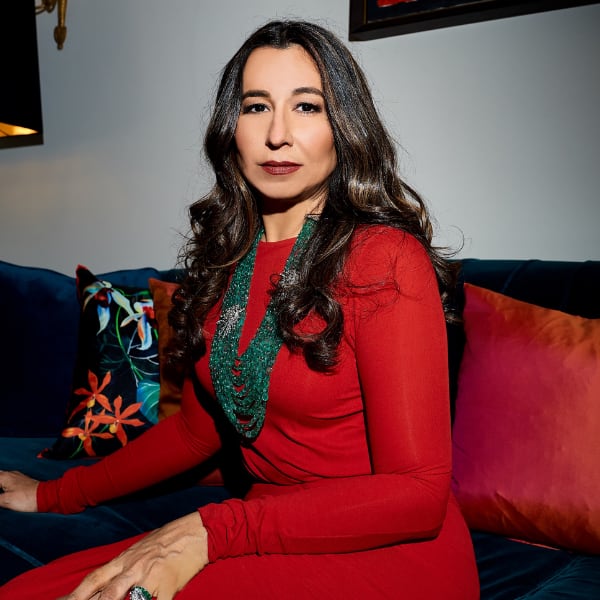
Radhika Nayar of Devi Jewels. Photo: Devi Jewels
There are pieces of Indian inspiration, but Nayar’s jewellery mostly treads that fine space between classic and modern; her large cocktail rings and diamond, or diamond and pearl, chokers are notably popular.
There is an emphasis on the precious three – diamonds, rubies and emeralds – as the higher quality stones become rarer, alongside using South Sea pearls and tanzanite.
Last October, Mumbai-headquartered Studio Renn took part in a month-long residency at Sotheby’s Dubai, which was so successful that Roshni and Rahul Jhaveri plan to return this year. It was the first time they had showcased their avant-garde work in the GCC, although their modern award-winning designs have been acclaimed in the US and Geneva.
“Collectors in Dubai have access to some exceptional jewellery, but not as much contemporary fine jewellery,” says Roshni, so they were drawn “to the more unconventional works in blackened gold, grey gold and works which play with gemstone reflections.” They are, she says, “open to taking risks with the unfamiliar and always on the lookout for the new and the different.”
Their work is experimental, as the name Renn suggests.
“It means ‘rebirth’ in Latin and is a rebirth of ideas and concepts,” explains her husband Rahul, the designer, who has descended from a family of diamond cutters.
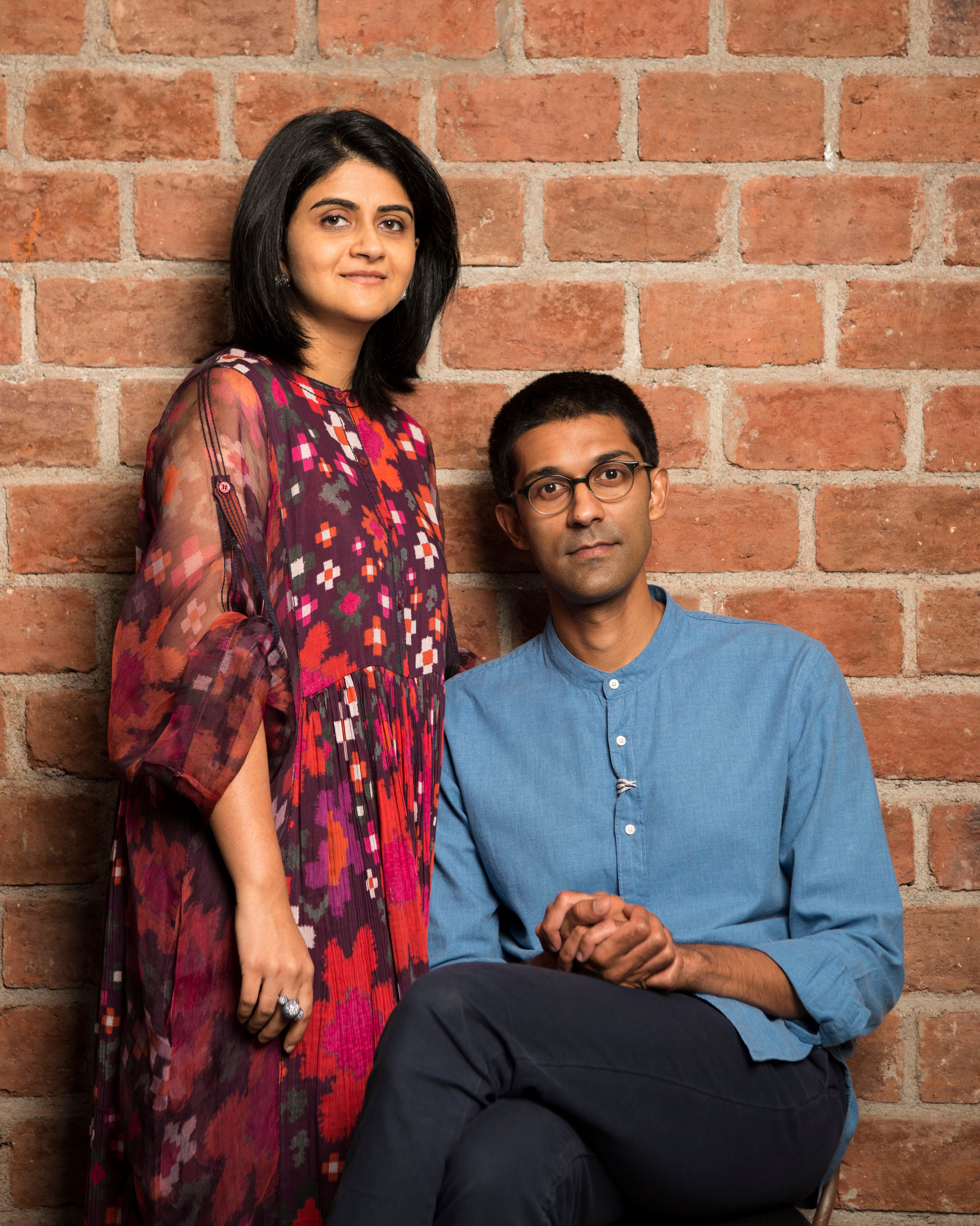
Roshni and Rahul Jhaveri, founders of Studio Renn. Photo: Studio Renn
The aesthetic is conceptual, contemporary and innovative, hence the use of materials such as concrete “that is common, yet valuable” when used in jewellery. There are several collections, such as Puffball, that feature diamond rings and bracelets that are seemingly unfinished, with hollow spaces left unset and the gold unpolished.
These are ideas that take their cue from the contemporary art world rather than Indian heritage. The designs are sculptural (taking shapes from nature), minimalist in terms of colour palette and very textural. What is interesting is that the Jhaveris don’t start with the idea of designing jewellery at all. “It is the process of creation that takes centre stage,” they say.
It is this approach to innovation and enterprise, like that of others in the Indian design community, that is highlighting a new wave of creativity that is transforming international perceptions of what Indian jewellery is today.
News Related-
AWS and Clarity AI to use generative AI to boost sustainable investments
-
Ref Watch: 'Enough' of a foul to disallow Man City goal vs Liverpool
-
Day in the Life: Ex-England rugby star on organising this year's Emirates Dubai Sevens
-
Pandya returns to MI, Green goes to RCB
-
Snowstorm kills eight in Ukraine and Moldova, hundreds of towns lose power
-
‘This is why fewer Sikhs visiting gurdwaras abroad’: BJP after Indian envoy heckled in Long Island
-
Inside a Dubai home with upcycled furniture and zero waste
-
Captain Turner aims for Pitch 1 return as JESS bid to retain Dubai Sevens U19 crown
-
No Antoine Dupont but Dubai still set to launch new era for sevens
-
Why ESG investors are concerned about AI
-
Your campsite can harm the environment
-
Mubadala, Saudi Fund deals on US radar for potential China angle
-
Abu Dhabi T10 season seven to kick off with thrilling double-header
-
Eight climate fiction, or cli-fi, books to consider before Cop28
